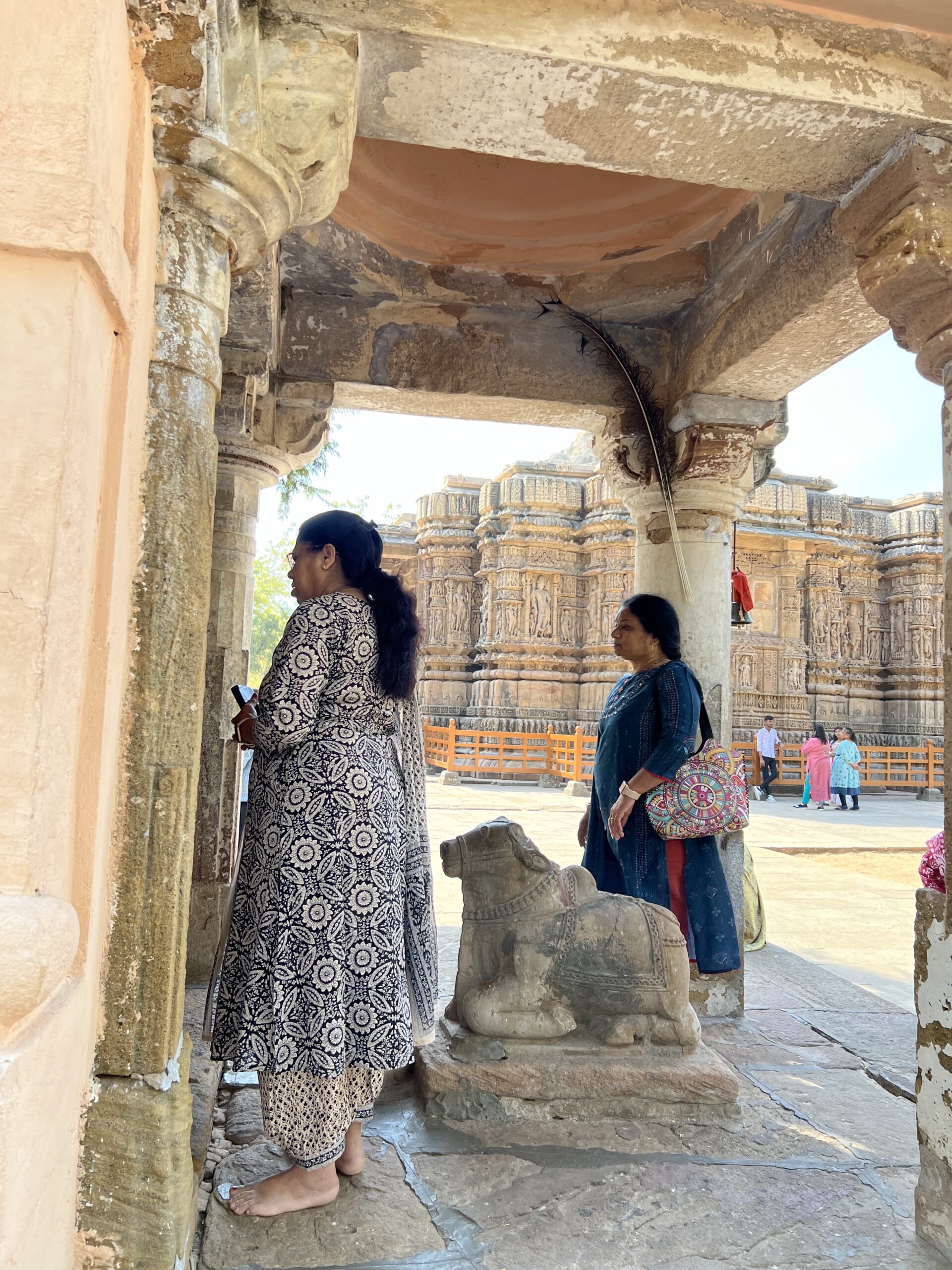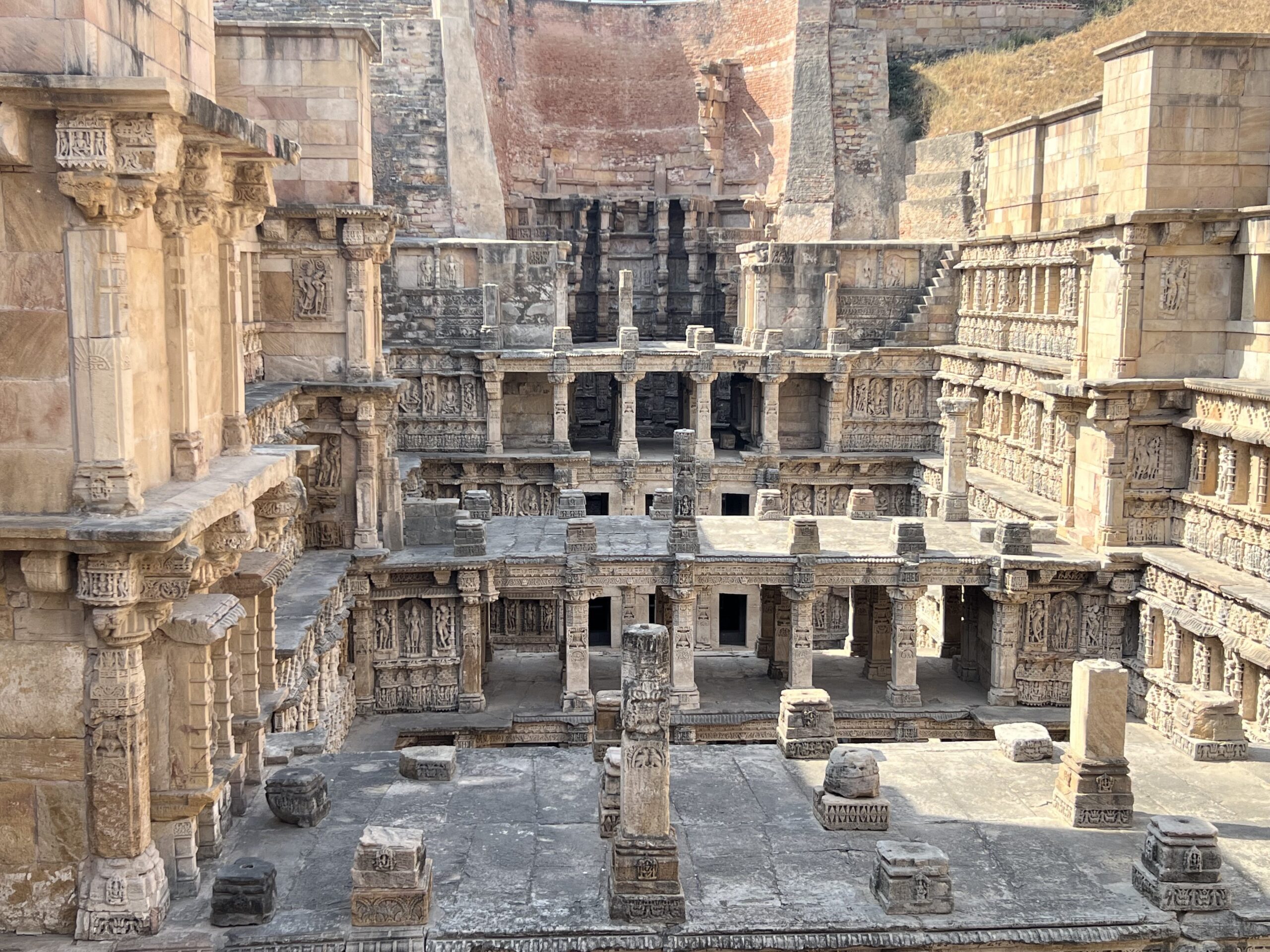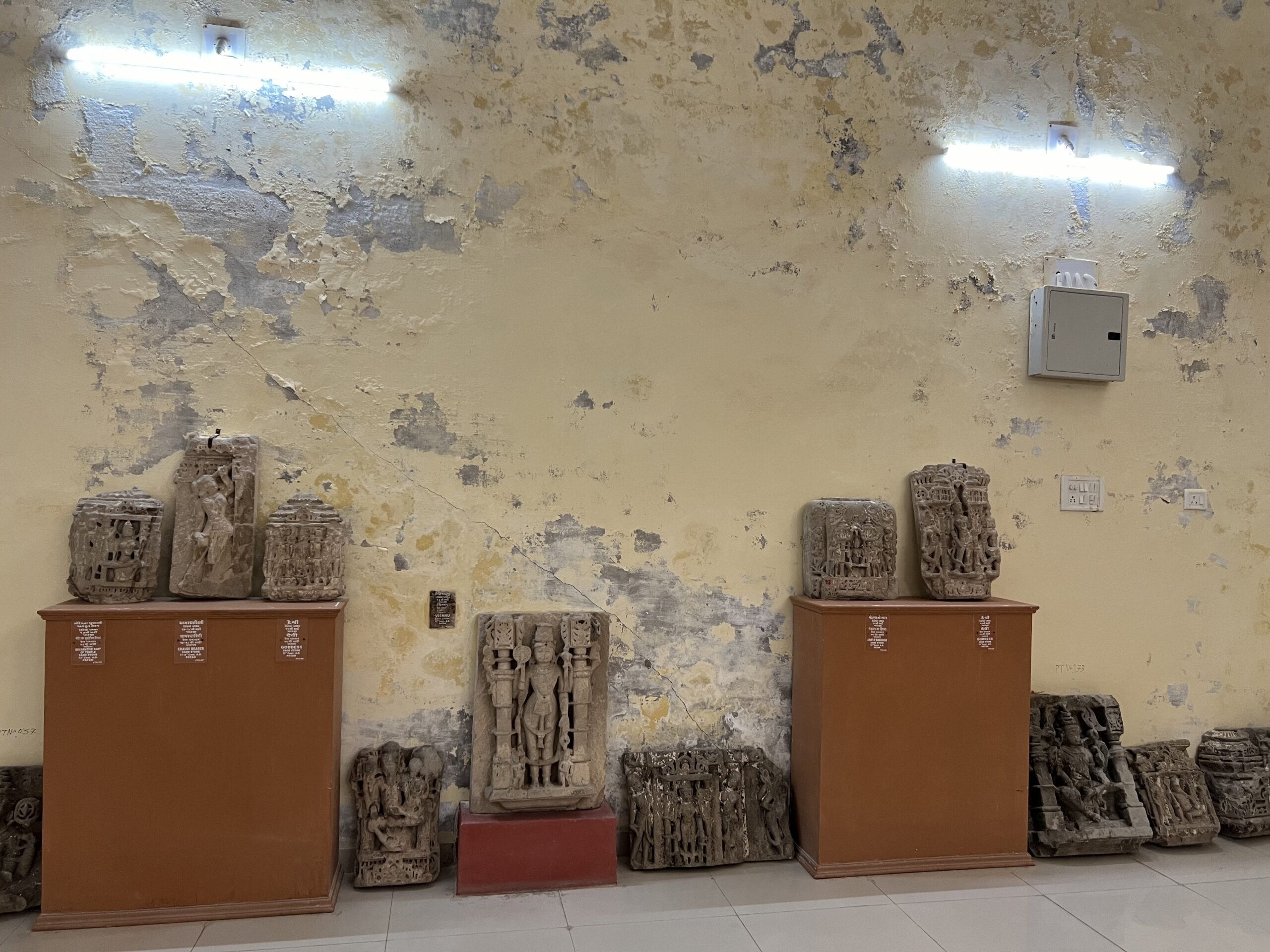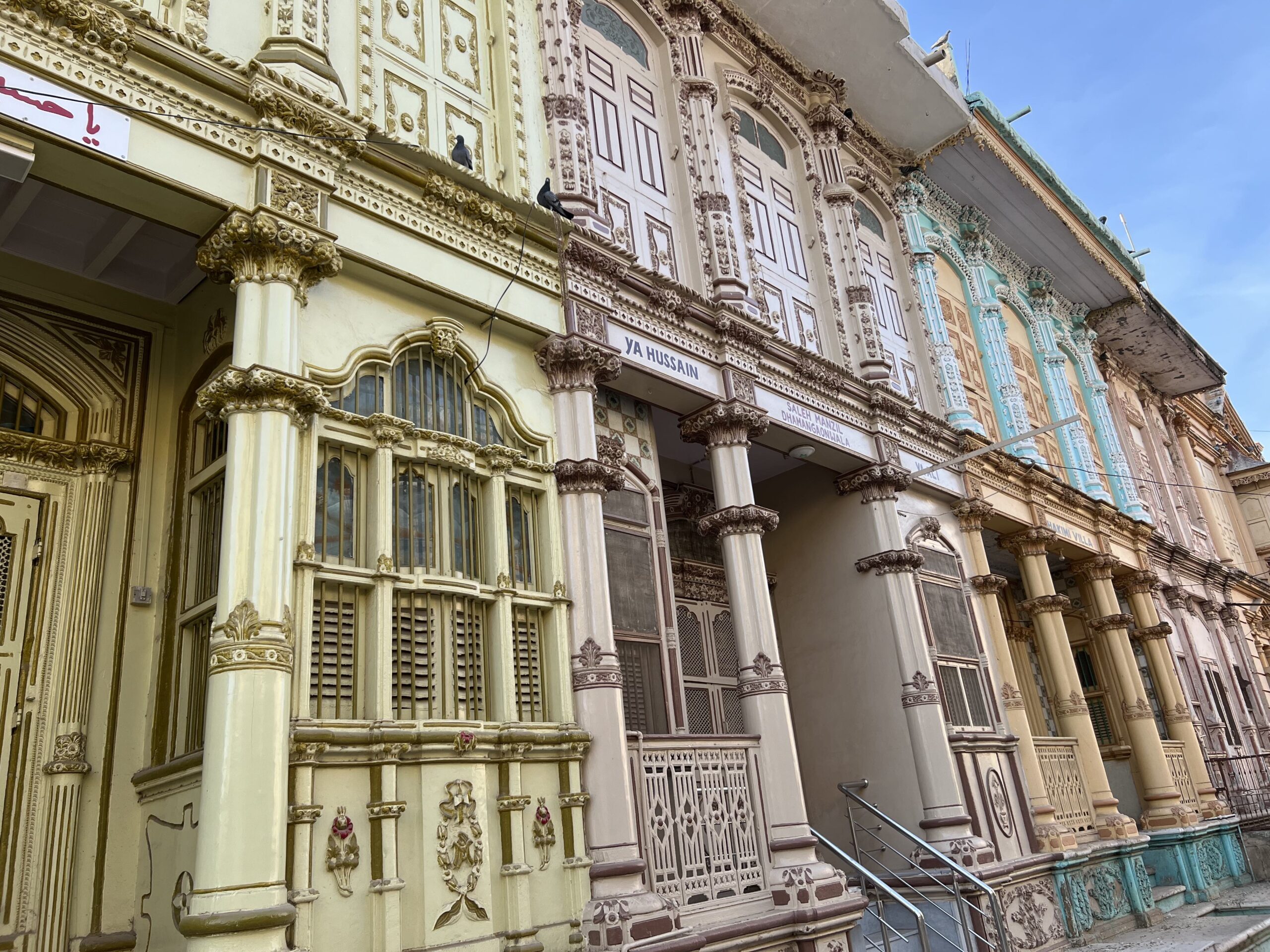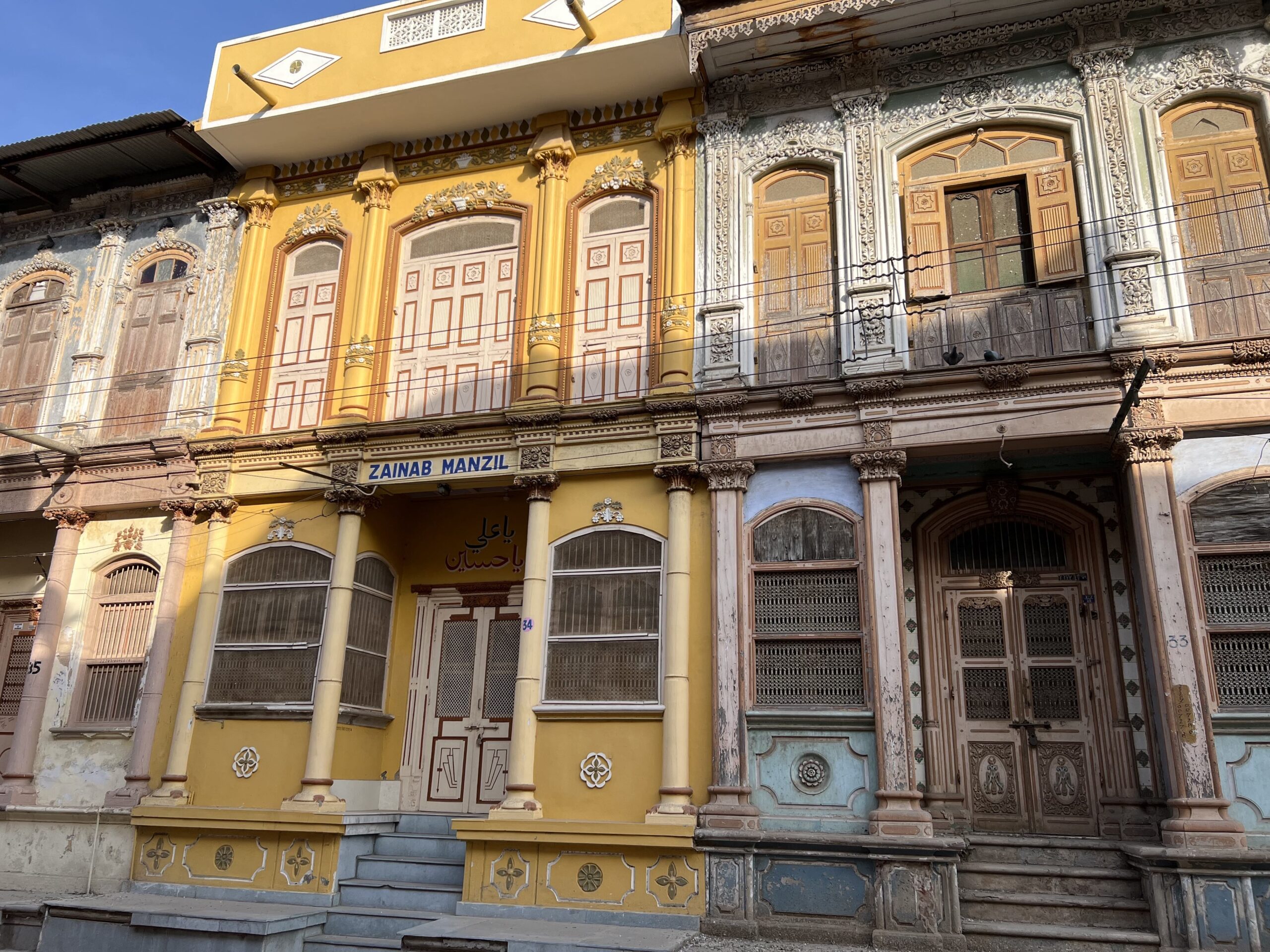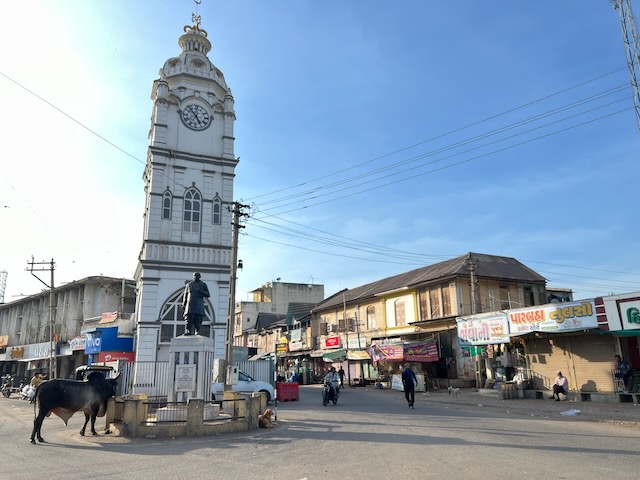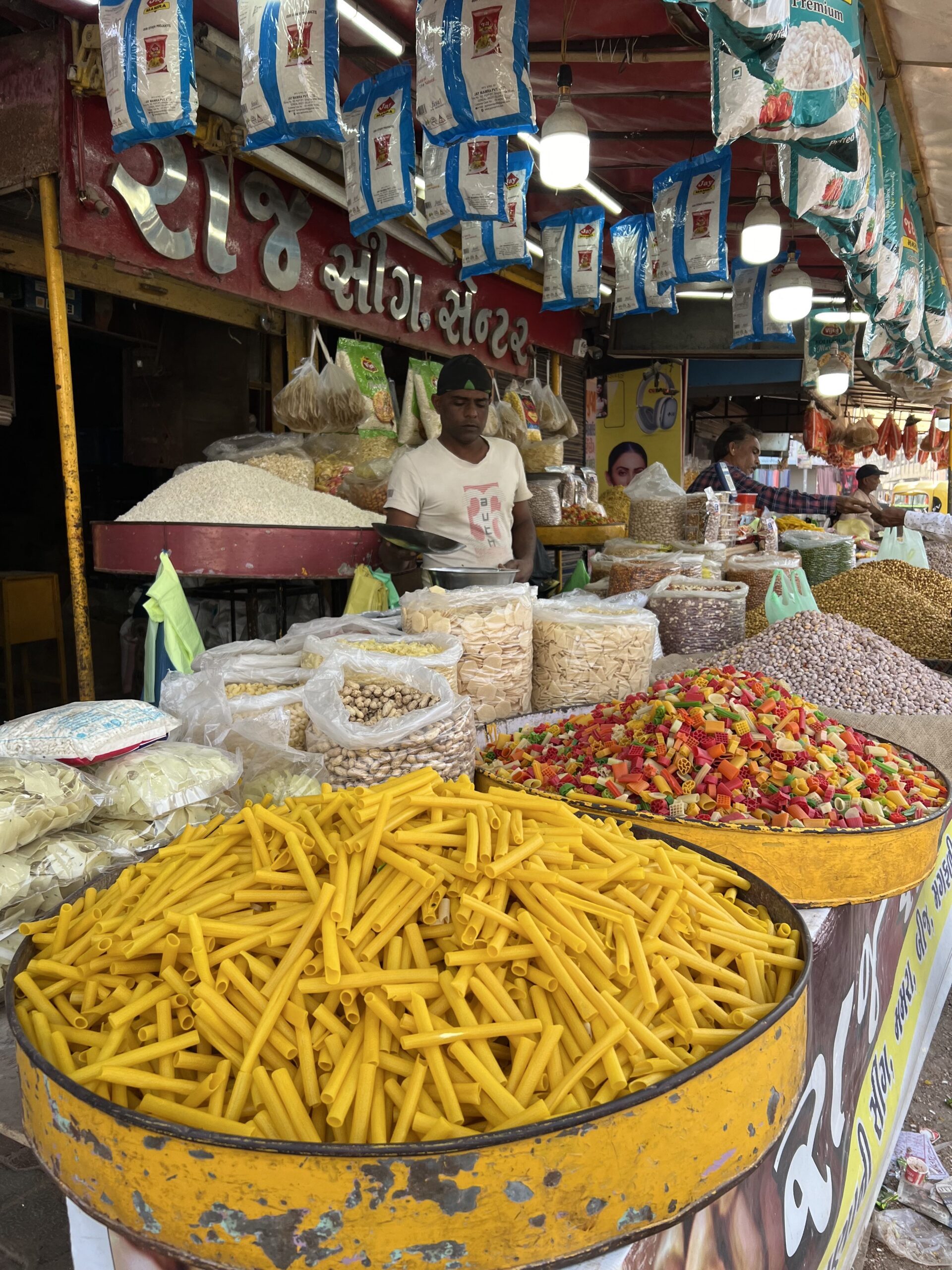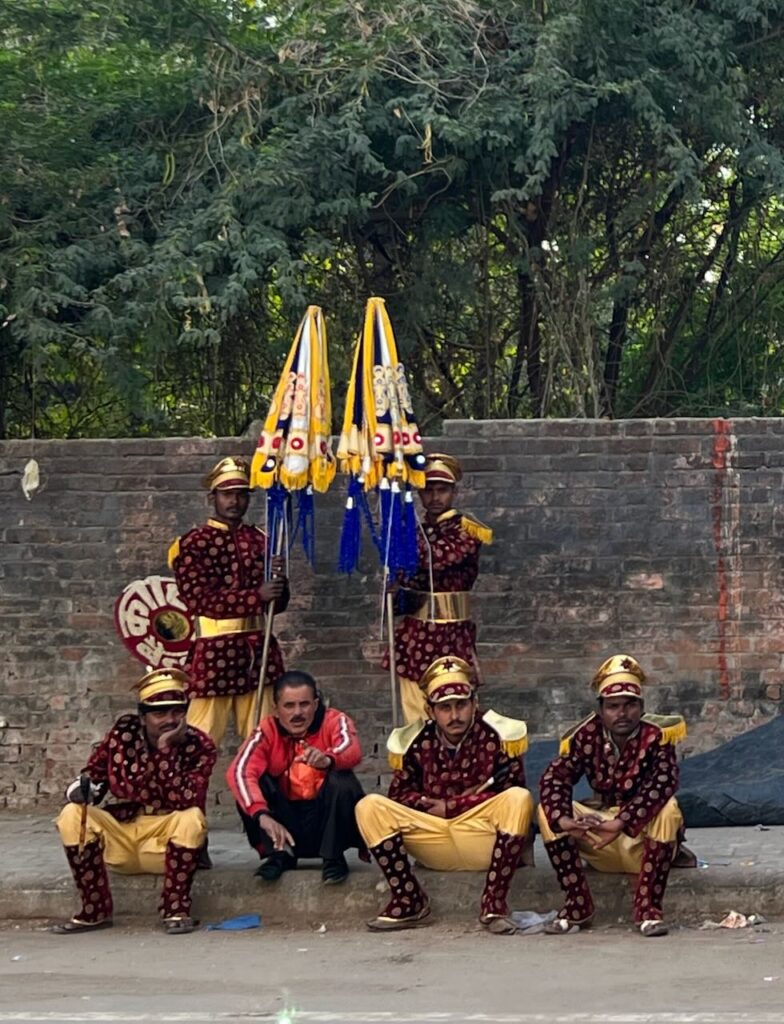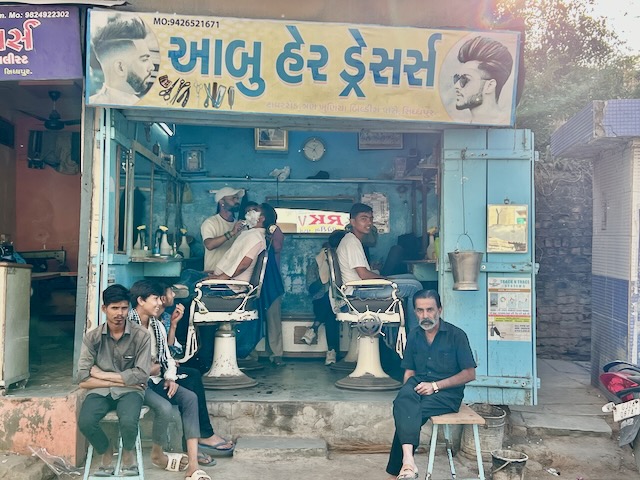January 28
Kathiwada Central Gujarat
The lack of foreign tourists in this area of India is very apparent to Ginny and I as we are often targets for questioning by both children and adults. We had certainly experienced this during visits to India a long time ago but are surprised that we are still constantly accosted by people to take a photo with us and asking us where we come from, with fairly aggressively curiosity. Bill, who could pass for British military with his mustache, is usually left alone, but even Gayathri, who looks different with her South Indian clothing and jewelry, is often approached by women interested in her story.
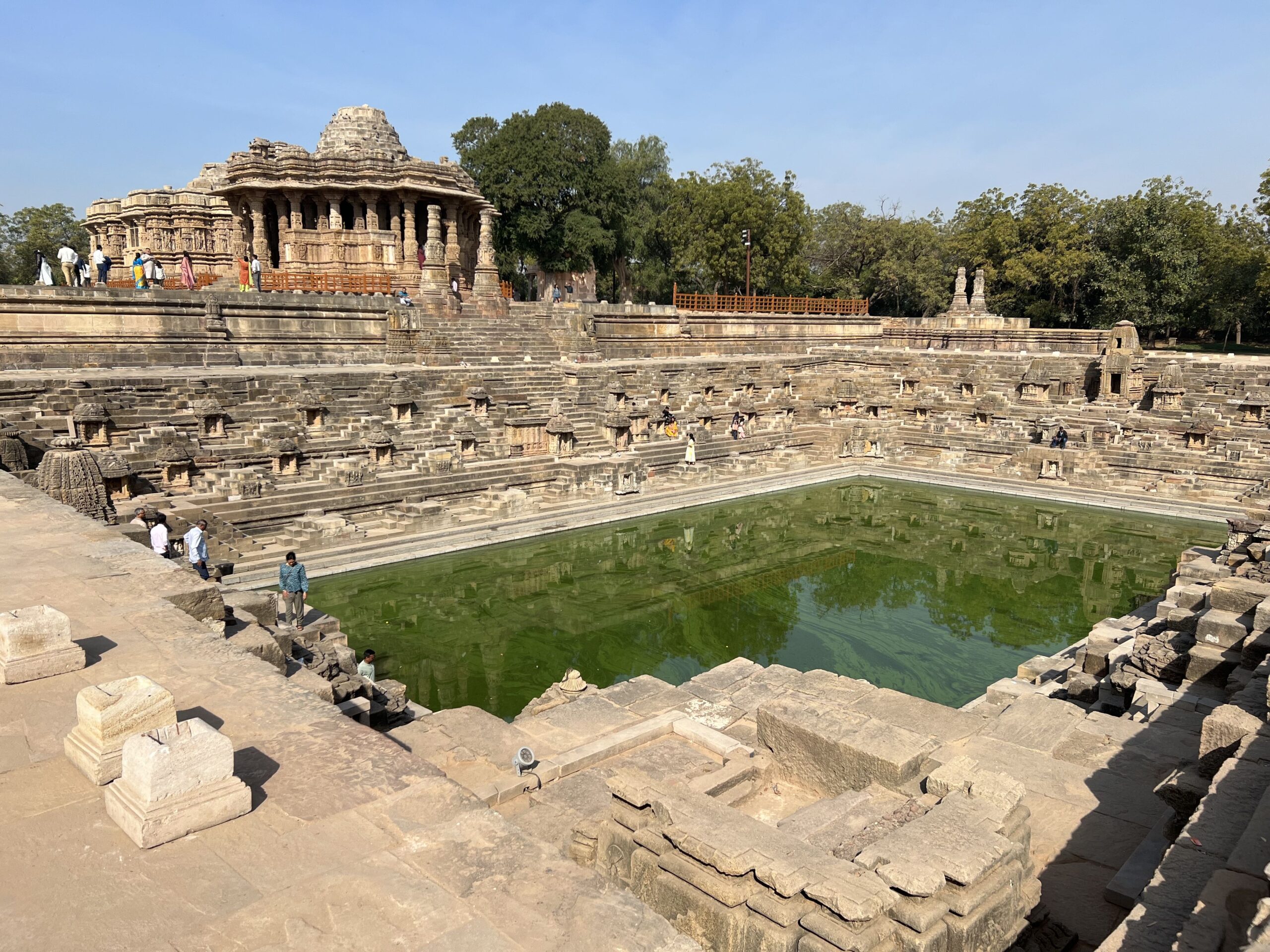
Traveling out of the Kutch area, we visit the Sun Temple of Modera, an astounding piece of 1000 year old architecture built out of sandstone. It comprises both a very large step-well for water and a beautifully carved temple complex. Because many of the stone carvings were partially destroyed by Muslim marauders about 800 years ago, it is no longer an active temple. Gayathri tells us that if the main god inside a temple is damaged, it can no longer serve as a place of worship until it is replaced. A small side temple built about 900 years ago is being visited by faithful Hindus
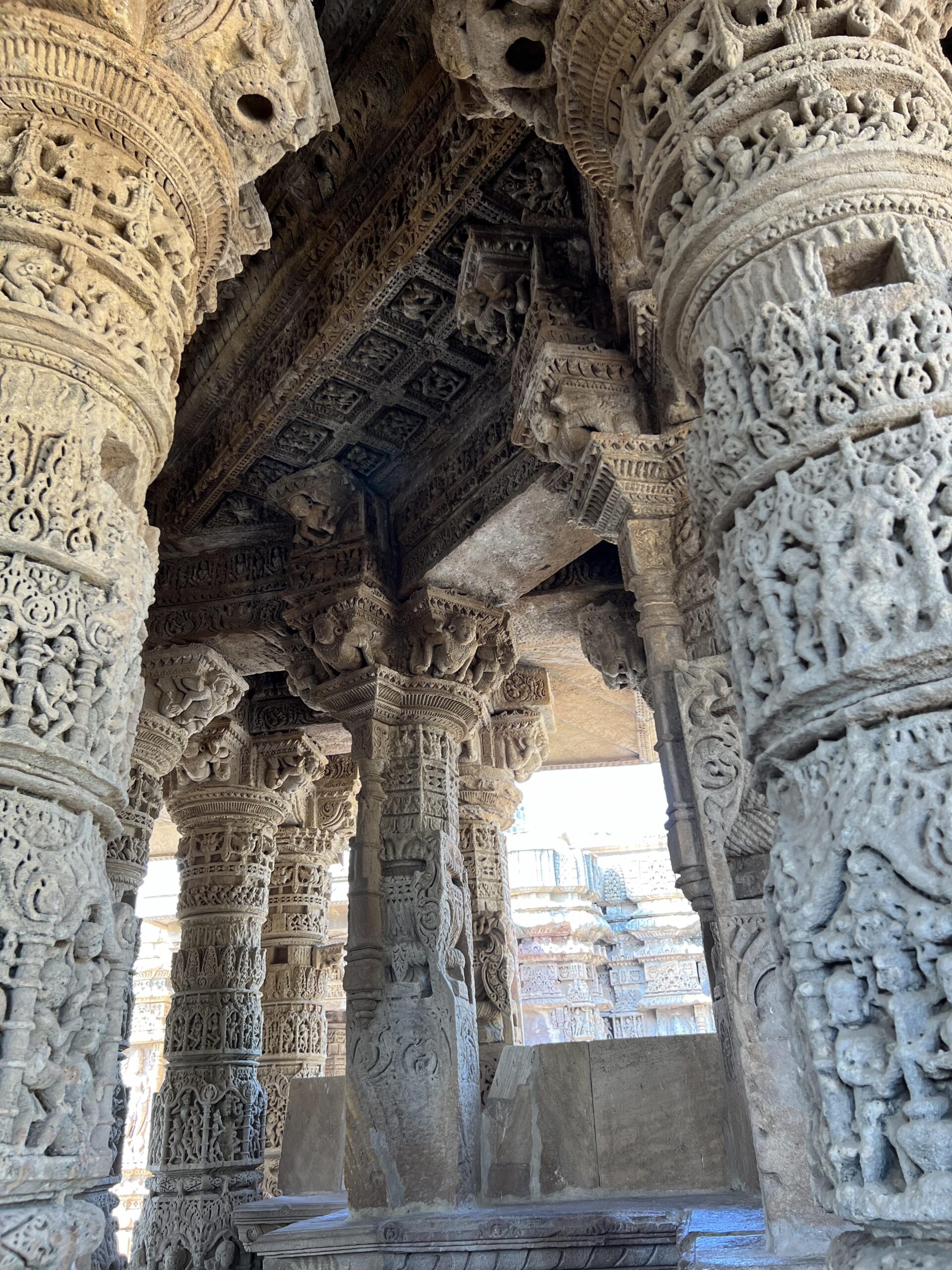
A side note: Our van was just stopped on the highway by a group of Hijra, standing right in the middle of the road and not letting the van pass until a “donation” is made. Hijra are considered here a “third gender”: born men dressed as women and a known social group. Our guide describes them as eunuchs but my understanding is that they are transgender who band together to live a life not otherwise available in this country, although some do choose castration. I have never seen such agressive panhandling before but our guide and Gayatri say it is now common here.
Our visit in Patan to Ranki Vav, the Queen’s step well which was created about 1000 years ago in memory of the queen’s husband who died in battle. This visit was stressful for me as it is a long serious series of irregular steps far down without any handrails and Ginny and I choose to go only a little ways down. But I believed that Gayathri, Bill and our Guide would only be going a little further and would then be back to get us, especially as Bill indicted his hesitation to walk down at all. But they were gone about half an hour and Ginny and I were left sitting on the stone steps fending off everyone who was waking doen, everyone wanting to take our photo and asking us where we were from. I finally went down to get them, perhaps contributing to my weakened knee.
Patan is also the home of the Patola weavers, a very complex form of Ikat dying on both sides of the cloth. We visited the Patola Weaving Museum containing samples of some of the masterpieces created by generations of weavers working in this style. As we had some extra time we also went to the Patan Museum. There are scattered around some of the ancient stone carvings as well as some textile displays and paper cutouts, another specialty of the region. We were the only people in the museum. I guessed that the museum was built in about 1965 from the mildew and disintegration I saw on walls and floors. so I was shocked to learn it was built in 2010!
This day was filled with one surprise after another. We drove to the small town of Siddhpur where rich merchants at the turn of the 20th century built glorious two-story row-houses in an Indian-Victorian style. Very ornate with greek columns and shutters. These would not look out of place in San Francisco. Except that they have been basically abandoned by their owners, who mostly live abroad and come back about once a year and are in varying degrees of disintegration. Some people are keeping them painted and somewhat maintained but most of them are in sorry need of repair.
The central clocktower in the city and other historic buildings all add a sense of a city lost in time although vibrant with small shops and sidewalk sellers.
At last we come into Danta, the small former principality where we are staying tonight at the maharaja’s residence. It is dark when we arrive and it appears the maharani has forgotten guests were coming. We are led inside into a long dark hallway which, when the lights are switched on, display a line of stuffed tiger and leopard heads on the wall. Inside the living room area, more stuffed animals lie await in corners along with photographs of old royalty. But she and her son does show up, we are taken to our rooms in the new palace across the way, and we enjoy dinner together. It turns out that the maharaja died suddenly 6 months ago and Chandra, the maharani, is trying to figure out her new life. Her son who lives with his family in Ahmedabad is there at this time as well and we talk to both of them, learning that it is the great-grandfather who was the big game hunter and that the animals displayed were basically found in the nearby woods until the last was killed about 5 years ago.
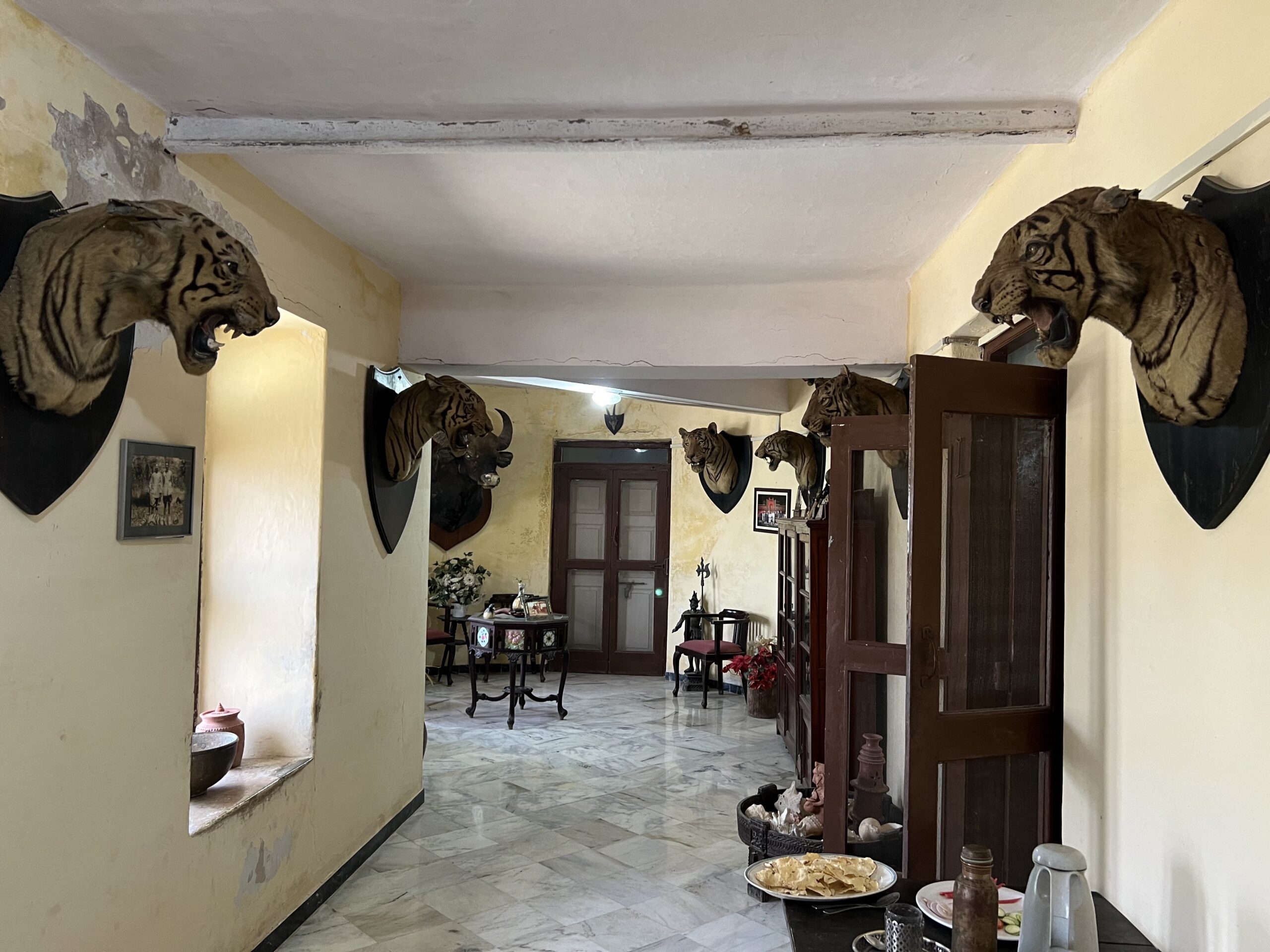
This palace is built at the top of a hill and we are surrounded by the Aravalli Mountain range. We have large balconies outside our rooms overlooking the town and coming up from the streets, all night, is the sound of loud wedding music and firecrackers. We are told this is wedding season and the festivities go on for days, and nights. So much for a good nights sleep.

